Blog
What is PCI DSS?
PCI DSS is the global security standard for processing cardholder data. Learn how it applies to your organization and what’s needed to prove compliance
Katrina Dalao
Sr. Content Marketing Specialist, CIPM
June 14, 2023

Credit and debit card numbers are some of the most valuable digits linked to an individual. Not only are they equivalent to cash, a recent survey revealed more than 90% of Americans use credit or debit cards as their primary payment method.
If your organization accepts card payments, you may have come across the Payment Card Industry Data Security Standard (PCI DSS).
PCI DSS is a set of security standards to help protect cardholder data during transactions. It pertains to any organization that processes, stores, or transmits credit card information, regardless of its size or number of transactions. (Yes, even if you process a single credit card payment a year, PCI DSS still applies to you!)
In this article, we cover the basics of PCI DSS, its primary goals and requirements, and what you need to prove compliance.
Our latest webinar on PCI DSS walks you through how to streamline and accelerate your road to compliance. Click to watch now.
What is PCI DSS?
The Payment Card Industry Data Security Standard (PCI DSS) is a set of requirements designed to ensure that all organizations that process, store, or transmit credit card information maintain a secure environment.
It was created by the Payment Card Industry Security Standards Council (PCI SSC), an independent body founded by the major payment card brands, namely American Express, Discover, JCB, MasterCard, and Visa.
The primary goal of PCI DSS is to protect cardholder data during payment card transactions, reducing the risk of breaches and fraud. By establishing standard policies and procedures, PCI DSS provides an actionable framework that prevents, detects, and reacts to security incidents.
PCI DSS applies to all merchants, financial institutions, service providers, and any other organization involved in the payment card ecosystem. Failure to comply can result in fines, penalties, or card processing restrictions.
It's important to note that PCI DSS is not a law. Rather, it’s a global security standard many jurisdictions have elected to incorporate into their regulations. For example, Nevada, Minnesota, and Washington have written portions of the PCI DSS into their state laws. PCI DSS compliance is also a common inclusion in contractual agreements between organizations and payment brands.
Determining how PCI DSS applies to your organization can be complicated. The cards you work with and the number of transactions you process per year determine which PCI DSS controls apply to you. The first step is to find out whether your organization is a merchant, a service provider, or both.
What is a Merchant?
The PCI SSC defines merchants as “any entity that accepts payment cards bearing the logos of any of the five members of PCI SSC (American Express, Discover, JCB, MasterCard, or Visa) as payment for goods and or services.”
While each of the payment brands has its own specific compliance program, merchants are classified into four general levels:
- Level 1 Merchants: More than 6 million payment card transactions annually
- Level 2 Merchants: Between 1 million and 6 million payment card transactions annually
- Level 3 Merchants: Between 20,000 and 1 million payment card transactions annually
- Level 4 Merchants: Fewer than 20,000 online transactions annually
What is a Service Provider?
Service providers are defined as “any business entity that is not a payment brand, directly involved in the processing, storage, or transmission of cardholder data on behalf of another entity.”
This includes companies that provide services that control or could impact the security of cardholder data, such as call centers, hosting providers, and network support. Unlike merchants, service providers are only classified into two levels:
- Level 1 Service Providers: More than 300,000 payment card transactions annually
- Level 2 Service Providers: Less than 300,000 payment card transactions annually
If an organization’s service includes storing, processing, or transmitting cardholder data on behalf of other merchants or service providers, then it’s considered both a service provider and a merchant.
For example, an internet service provider is a merchant because it accepts payment cards for monthly billing. But it’s also a service provider if it hosts other merchants as customers.
PCI DSS compliance checklist: Goals and requirements
Regardless of which level you fall under, PCI DSS outlines six goals and 12 requirements to enhance the security of payment card account data:
Build and maintain a secure network and systems
- Install and maintain network security controls
- Apply secure configuration to all system components
Protect account data
- Protect stored accounts data
- Protect cardholder data with strong cryptography during transmission over open public networks
Maintain a vulnerability management program
- Protect all systems and network from malicious software
- Develop and maintain secure systems and software
Implement strong access control measures
- Restrict access to system components and cardholder data by business need-to-know
- Identify users and authenticate access to system components
- Restrict physical access to cardholder data
Regularly monitor and test networks
- Log and monitor all access to system components and cardholder data
- Test security of systems and networks regularly
Maintain an information security policy
Support information security with organizational policies and programs
Note: Every payment brand will also have its own assessment and audit requirements.
Who performs a PCI DSS audit?
A Qualified Security Assessor (QSA) is an individual certified by the PCI SSC to perform an onsite audit.
Some entities may also sponsor an employee to train as their Internal Security Assessor (ISA). ISAs are able to conduct internal assessments and act as a liaison with an external QSA.
During an audit, the QSA will assess whether the entity has met PCI DSS requirements. This includes scoping or identifying all system components and workflows included in your cardholder data environment, completing the required documentation (more on this in the next section), and other forms of gap analysis or remediation to prepare for the upcoming audit.
What are the PCI DSS compliance reports?
While PCI DSS compliance is different for every organization, the process typically involves three types of reporting documentation:
Self-Assessment Questionnaire (SAQ)
The Self-Assessment Questionnaire (SAQ) is a validation tool for entities that are not required to submit a Report on Compliance (ROC) and eligible to perform their own assessment.
A SAQ is composed of yes-or-no questions. There are eight available SAQ forms for merchants and one for service providers, varying by the type of business activities, transaction methods, or other criteria.
Report on Compliance (ROC)
A Report on Compliance (ROC) is the most thorough documentation of compliance, detailing whether the entity meets all 12 standard requirements or if any deficiencies were discovered during the assessment.
ROCs are completed by a QSA after performing the on-site audit, and then submitted to the acquiring bank and payment brand for verification.
Attestation of Compliance (AOC)
An Attestation of Compliance (AOC) is documented evidence of an entity's PCI DSS compliance, affirming that its security practices effectively protect the cardholder’s data. AOCs must be signed by the entity and the QSA (if applicable) and submitted to the acquiring bank or payment brand, along with the SAQ, ROC, and any other requested documentation.
How long does PCI DSS take?
The PCI DSS assessment typically takes six to 12 weeks. The exact duration, however, varies depending on the project’s size, the number of systems, and how many security measures and policies are already in place. (Note that this is only the estimated time for performing PCI SAQs.)
PCI DSS implementation also fluctuates from company to company. As PCI DSS only applies to the infrastructure that contains credit card data, a good way to lower implementation cost and time is by limiting the server storage and management of credit card data as much as possible.
PCI DSS compliance certificates are valid for one year. To maintain compliance, entities are required to complete a self-assessment questionnaire.
If there are any changes in infrastructure or environment, or even a new feature release, that impacts cardholder data, then PCI DSS compliance is no longer valid. The organization will need to revalidate compliance for its current state.
Furthermore, the PCI DSS requirements are frequently updated (with the latest version PCI DSS v4.0 issued March 31, 2022), which requires entities to implement new standards.
How often should you get a PCI DSS audit?
Certain entities are required to undergo annual audits in order to maintain PCI DSS compliance. This includes:
- Level 1 Merchants that process more than 6 million payment card transactions annually
- Level 1 Service providers that process more than 300,000 payment card transactions annually
- Any entity that recently experienced a breach or cyberattack
The exact frequency of audits, however, depends on the payment brand you choose to work with, as the PCI DSS does not mandate a specific frequency.
How much does a PCI DSS compliance cost?
The cost for PCI DSS compliance can be divided into three main categories:
- The cost to prepare and implement PCI DSS standards
- The cost to certify or document your compliance status
- Annual costs to maintain PCI DSS compliance
While the exact PCI DSS compliance cost depends on the organization, it’s usually based on a few key factors:
- Organization type (merchant, service provider, or both)
- Organization size
- Number of annual transactions (as classified by PCI DSS)
- Any other requirements from acquiring bank or payment brand
- Current security environment and compliance readiness
In most cases, the cost for PCI DSS compliance can range from at least $20,000 (for startups and small organizations that handle fewer transactions) to upwards of $300,000 for larger enterprises. The exact amount will depend on the factors listed above and your merchant or service provider level.
Prepare for your PCI DSS compliance with OneTrust
Despite its numerous benefits, maintaining a PCI DSS compliant system can be a complicated process. OneTrust helps streamline the process with our automated scoping wizard that generates all the required PCI DSS controls, policies, and evidence tasks. Stay continuously compliant with automated evidence collection capabilities that can integrate directly into your tech stack.
With OneTrust Compliance Automation, you can build, scale, and automate your security compliance program, reduce your cost of compliance up to 60%, and obtain certifications 50% faster.
You may also like

Webinar
Technology Risk & Compliance
2025 regulatory round-up: Navigating the evolving compliance landscape
In this webinar, our regulatory intelligence experts break down the most important updates across 60+ global frameworks and help your teams move from research to action with practical, operational guidance.
January 14, 2026

On-Demand
Responsible AI
Future of Third-Party Risk Management: AI, Governance, and Strategic Transformation
Discover how AI, governance, and transformation frameworks are reshaping Third-Party Risk Management. Join OneTrust and Deloitte on Dec 9.
December 09, 2025

On-Demand
Risk-enabled innovation: Uniting AI governance and risk management to accelerate responsible growth
Join OneTrust’s CISO and Head of AI Governance & Privacy to uncover how risk and governance alignment drives responsible AI innovation.
December 04, 2025
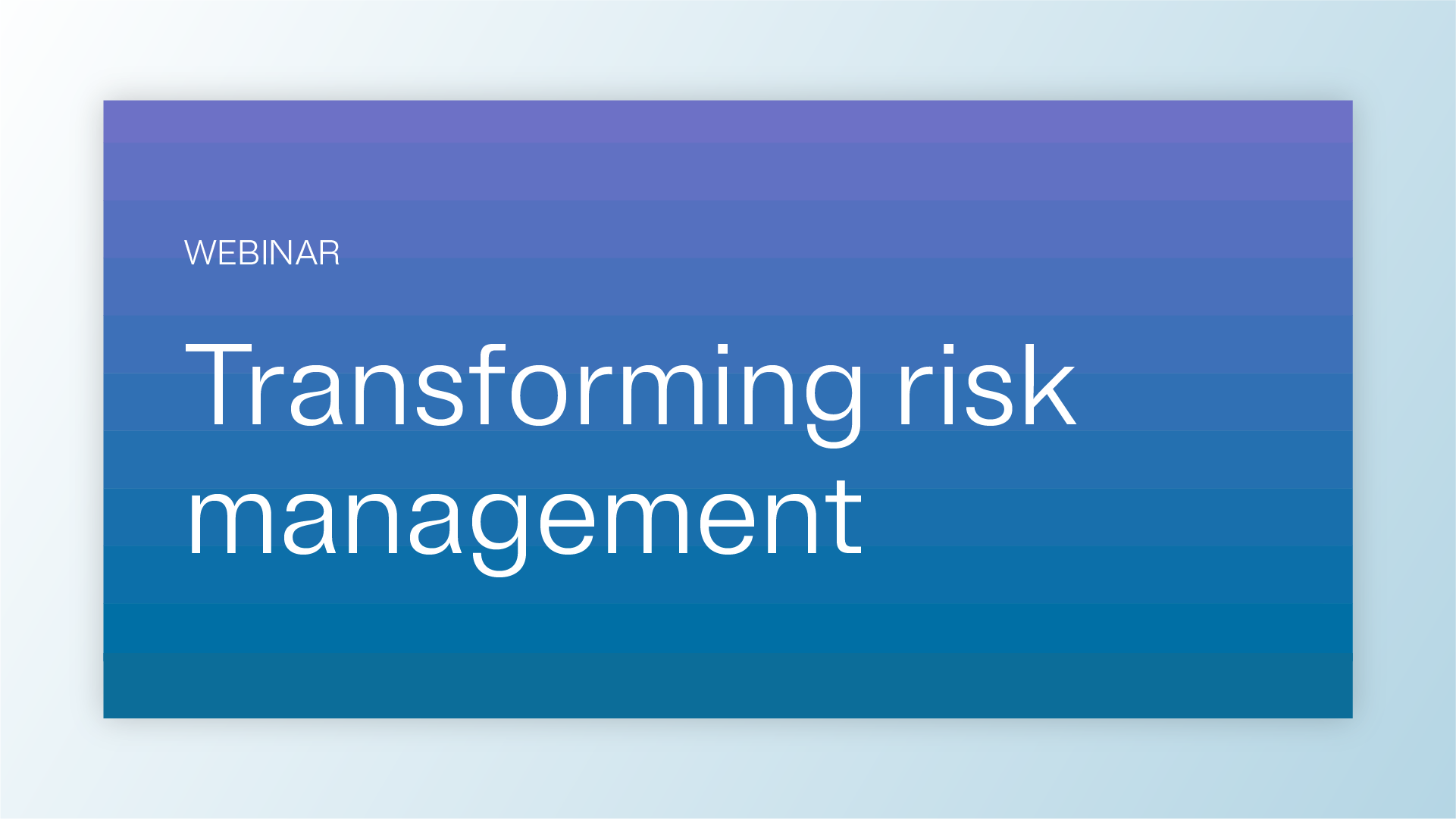
Webinar
Technology Risk & Compliance
Transforming risk management through integrated enterprise risk: A perspective from OneTrust & PwC
Join PwC and OneTrust for a webinar on how leading organizations are reinventing risk management through a connected, digital-first Integrated Risk Management (IRM) approach.
November 04, 2025
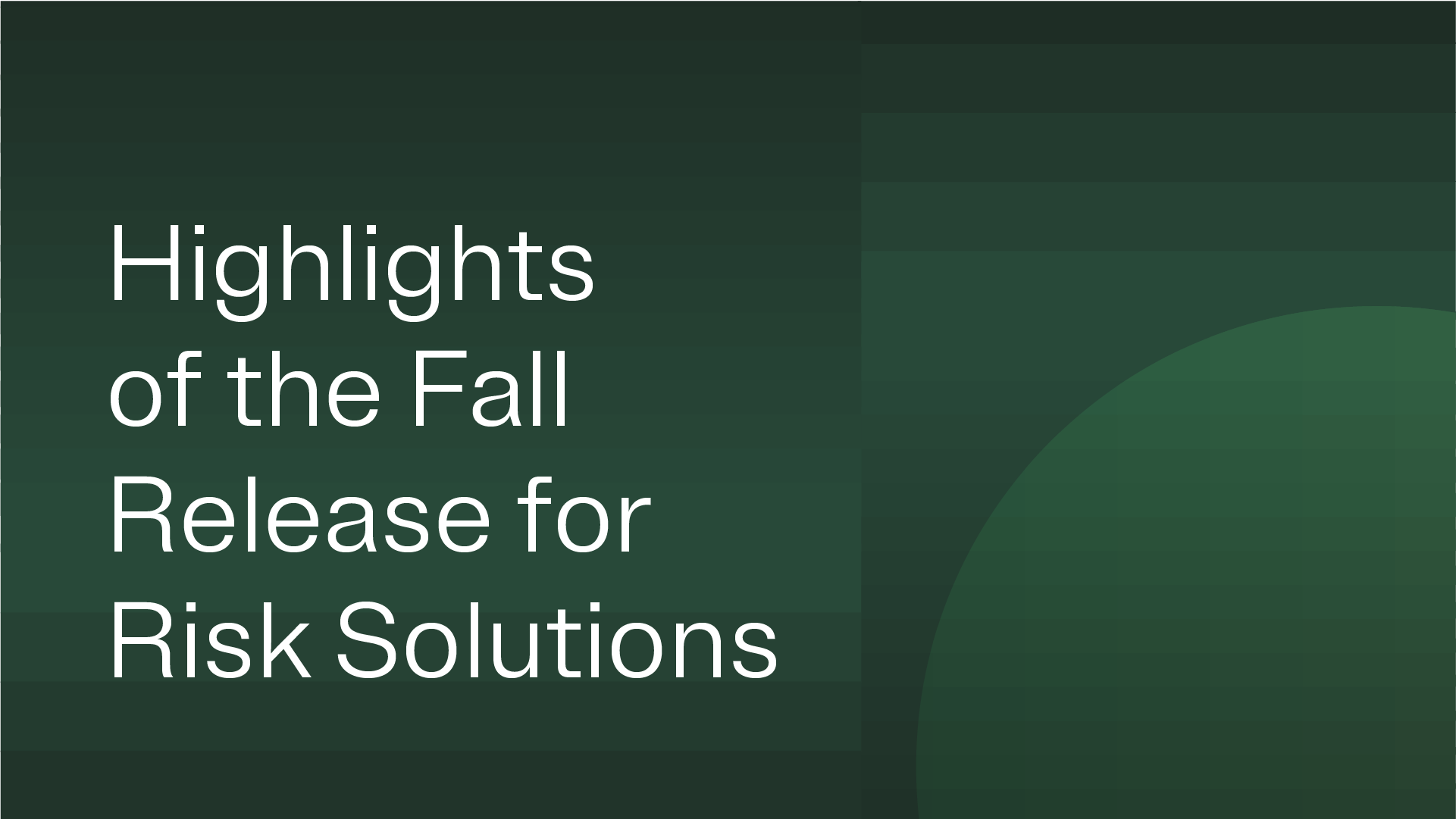
On-Demand
Third-Party Risk
Highlights of the Fall OneTrust release for risk solutions
Watch how OneTrust’s latest Risk Solutions release empowers teams with AI-driven vendor onboarding and automated evidence analysis for smarter compliance.
October 28, 2025
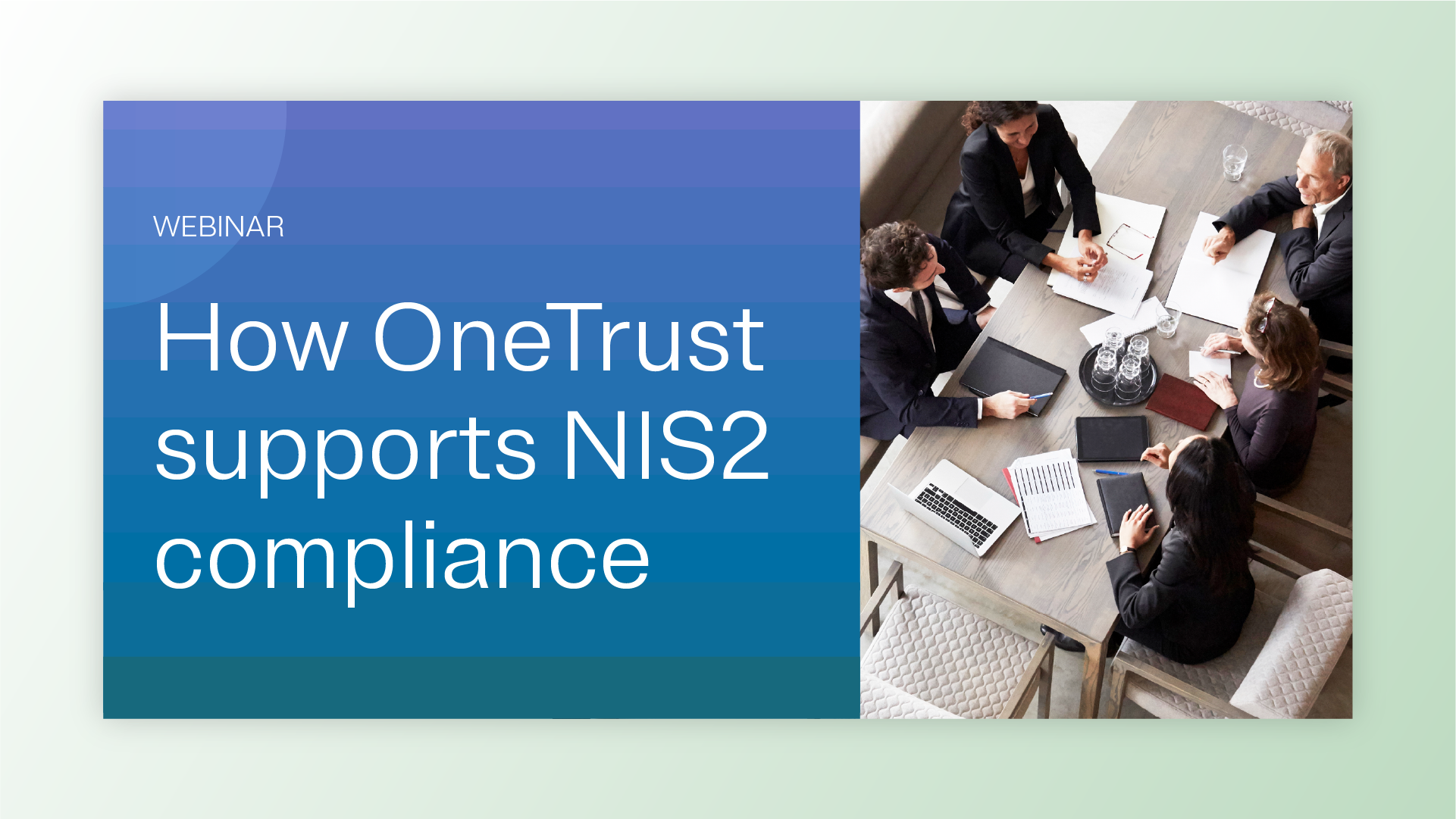
On-Demand
Technology Risk & Compliance
How OneTrust supports NIS-2 compliance: On-demand demo of our solution
Watch now this on-demand webinar to see how OneTrust helps organizations identify, manage, and mitigate cybersecurity risks in alignment with NIS-2 compliance obligations.
October 22, 2025

On-Demand
Technology Risk & Compliance
Evolution for compliance programs: A 5-point blueprint to mature your programs
Join our webinar to learn a practical compliance maturity framework and uncover strategies to evolve and optimize your compliance program.
October 07, 2025

eBook
Technology Risk & Compliance
Reinventing risk management through integrated risk: A joint perspective from PwC and OneTrust
A joint perspective from PwC and OneTrust on reinventing risk management through integrated risk:
September 11, 2025

Webinar
Technology Risk & Compliance
5 automation trends modernizing InfoSec in 2025
Learn how automation is transforming InfoSec program management to tackle modern risks, boost resilience, and deliver measurable business value.
August 13, 2025

On-Demand
Technology Risk & Compliance
Taming compliance complexity: Strategies for scaling across frameworks, systems & geographies
Discover how to scale compliance programs amid rising regulations and complexity. Gain actionable strategies to streamline controls, audits, and global oversight.
July 23, 2025

Report
Technology Risk & Compliance
OneTrust named a leader in the 2025 IDC MarketScape for worldwide GRC software
The OneTrust platform connects data, privacy, and risk teams in one unified system, so you can stay ahead of regulatory change and support responsible growth. Download the excerpt to learn how OneTrust helps you move faster, without sacrificing compliance.
July 17, 2025

On-Demand
Responsible AI
Building AI governance with security at the center
Discover how security leaders are securing AI models, data, and infrastructure while driving risk-aware AI governance programs.
July 10, 2025

On-Demand
Technology Risk & Compliance
Unifying third-party and tech risk in an AI-driven world
Join our webinar to learn how risk and security leaders are aligning third-party and tech risk for scalable, AI-ready compliance programs.
July 08, 2025

On-Demand
Technology Risk & Compliance
The automation advantage: Unlocking ROI from risk and compliance
Learn how automation reduces compliance costs, boosts audit readiness, and delivers 75%+ time savings across the compliance lifecycle in this practical, ROI-focused session.
May 28, 2025

On-Demand
Privacy Management
OneTrust Spring Release
We explore the latest release which introduces AI-assisted features that help privacy and third-party risk teams scale by reducing manual effort and friction, so they can focus on the work that matters most.
May 27, 2025

eBook
Technology Risk & Compliance
The risk-resilient enterprise: Automating compliance for security & scale
Risk flows throughout your organization’s systems and data, and without mapping or monitoring, your company’s security posture is constantly under pressure.
April 24, 2025

On-Demand
Technology Risk & Compliance
From reactive to resilient: Building and scaling a modern enterprise risk program
Join our masterclass for CISOs & InfoSec leaders to build scalable, modern risk management programs. Gain actionable strategies, frameworks, and real-world insights for success.
April 22, 2025

On-Demand
Technology Risk & Compliance
Harmonizing risk and compliance: Unifying InfoSec programs through automation
Join this webinar to discover how to streamline ISO 27001, GDPR, NIST & PCI DSS with automation, reduce manual work and enhance oversight.
April 09, 2025

Infographic
Technology Risk & Compliance
Automating compliance mitigates risk
Download our infographic to learn steps involved in compliance automation and how it mitigates risk in your organization's security program.
March 27, 2025

On-Demand
Technology Risk & Compliance
Operational resilience in a changing world: Going beyond compliance
Join this session to unpack key regulations, such as ISO 27001, APRA CPS 230, DORA, & SOC2, to learn how they impact internal & third-party operations.
February 20, 2025

On-Demand
Technology Risk & Compliance
Compliance Automation product showcase
Join our live demonstration and see how Compliance Automation can help boost compliance efficiency with automated workflows, shared evidence, and 40+ frameworks.
December 19, 2024

On-Demand
Technology Risk & Compliance
The PDPL in Saudi Arabia is now in effect: is your business ready?
Join our Saudi Arabia PDPL webinar for an overview on the data protection law, its requirements, and how to prepare for full enforcement.
December 12, 2024

On-Demand
Technology Risk & Compliance
Elevating client compliance with OneTrust Automation: Key strategies for partners
Discover how to use OneTrust Compliance Automation to establish client baselines, improve efficiency, and drive scalability. Learn key strategies to enhance your compliance impact.
December 11, 2024

On-Demand
Technology Risk & Compliance
Understanding the NIS 2 Directive: Compliance insights and best practices
This DataGuidance webinar explores the latest and expected developments in the implementation of the NIS 2 Directive, focusing on practical compliance strategies to ensure your organization is prepared.
December 04, 2024

On-Demand
Technology Risk & Compliance
Tech risk and compliance masterclass: An evidence-based approach to building by-design risk and compliance practices
Discover strategies to embed compliance and risk management into business processes with minimal disruption, using technology-driven solutions for efficiency, scalability, and improvement.
November 06, 2024

On-Demand
Technology Risk & Compliance
Building a strong security posture: Managing compliance, risk, and business engagement in a dynamic landscape
Join our webinar to learn how to optimize security posture, streamline compliance, and leverage automation to manage IT risk in today's complex digital landscape. Register now!
October 29, 2024

On-Demand
Privacy Automation
Build resiliency and operationalize compliance with OneTrust: Fall product release recap, 2024
Join our upcoming product release webinar to explore how these new capabilities can help your organization navigate complex frameworks, streamline third-party management, and accelerate AI and data innovation.
October 22, 2024

On-Demand
Technology Risk & Compliance
Tech risk & compliance masterclass: The anatomy of a framework
Master the fundamentals of constructing robust compliance frameworks that can seamlessly integrate with organizational operations while aligning with regulatory and strategic mandates to deliver measurable insights on your progress and gaps.
August 14, 2024

Webinar
Third-Party Risk
Third-Party Risk Management: From compliance to strategy series
Navigate third-party risk challenges and discover strategic steps to scale, automate, and operationalize your program with this webinar series.
August 09, 2024

Webinar
Technology Risk & Compliance
Tech risk and compliance masterclass series
Unlock tech risk management & compliance excellence. Master risk management, build robust frameworks, and foster cross-functional collaboration for long-term resilience.
August 07, 2024

On-Demand
Technology Risk & Compliance
Introducing OneTrust Compliance Automation
Join us as we explore OneTrust Compliance Automation, a holistic and fully integrated solution that streamlines and optimizes workflows, compliance, and attestation.
July 25, 2024

On-Demand
Data Discovery & Classification
Catch it live: See the all-new features in OneTrust's Spring Release and Post-TrustWeek recap
Join us as Ryan Karlin, Senior Director of Product Marketing highlights important updates from TrustWeek including an inside look into OneTrust's new platform features that make it easier for customers to activate data responsibly, surface and mitigate risk, and navigate the complex regulatory environment.
June 06, 2024

Report
AI Governance
GRC strategies for effective AI Governance: OCEG research report
Download the full OCEG research report for a snapshot of what organizations are doing to govern their AI efforts, assess and manage risks, and ensure compliance with external and internal requirements.
May 22, 2024

Infographic
Third-Party Risk
Streamline compliance with the Digital Operational Resilience Act (DORA)
Download our infographic to learn about the new DORA regulation, who needs to comply, and how OneTrust can help streamline the process.
April 29, 2024

Infographic
Technology Risk & Compliance
Rethinking risk assessments: Bridging the gap between best practices and action
Download our infographic to learn the main challenges faced during risk assessments, proven frameworks for assessing risks, and how to translate guidance into action.
March 07, 2024

On-Demand
Technology Risk & Compliance
PCI DSS Compliance: How to scope and streamline monitoring with Certification Automation
Join our PCI DSS webinar where we discuss how Certification Automation can help free up valuable InfoSec resources, streamline audits, and stay continuously compliant.
March 05, 2024

eBook
Ethics Program Management
Business messaging apps: A guide to corporate compliance
How can your business use third-party messaging apps while staying compliant? Dive into key usage considerations based on the DOJ’s 2023 guidance.
February 13, 2024

On-Demand
Technology Risk & Compliance
5 automation trends to modernize InfoSec compliance
Join our webinar for insights on transforming InfoSec program management. Navigate the complexities of modern security with a flexible, scalable, and cost-effective approach.
February 07, 2024

Infographic
Third-Party Risk
4 top-of-mind challenges for CISOs
What key challenges do CISOs face going into the new year? Download this infographic to hear what experts from industries across the board have to say.
January 30, 2024

eBook
Technology Risk & Compliance
NIST CSF 2.0: Changes, impacts and opportunities for your Infosec program
Get your free guide to the NIST Cybersecurity Framework 2.0 and learn how its proposed changes will impact your InfoSec programs.
December 18, 2023

Resource Kit
Technology Risk & Compliance
NIST CSF essentials: Empowering cybersecurity excellence
Download our NIST CSF Essentials resource kit and master cybersecurity compliance with expert insights, strategies, and real-world case studies.
December 15, 2023

On-Demand
Technology Risk & Compliance
Demonstrating GDPR compliance with Europrivacy criteria: The European Data Protection Seal
Join our webinar to learn more about the European Data Protection Seal and to find out what the key advantages of getting certified.
November 30, 2023

Data Sheet
Technology Risk & Compliance
Integrations to automate your framework compliance: ISO 27001, SOC 2, and NIST CSF
Explore how OneTrust integrations can help you automate compliance with today’s most popular InfoSec frameworks.
November 28, 2023

Checklist
Technology Risk & Compliance
SOC 2 checklist: 8 steps to achieve compliance
This SOC 2 checklist provides clear action steps that enable you to mature your security program and fast-track your way to compliance.
November 28, 2023

eBook
Technology Risk & Compliance
Navigating the ISO 27001 compliance journey eBook
In this guide, you’ll learn what ISO 27001 is, which steps to take at each phase of the process, and how automation can help you get and stay compliant.
October 16, 2023

Infographic
Technology Risk & Compliance
Understanding Europe's Top InfoSec and Cybersec Frameworks
Learn the ins and outs of Europe’s top InfoSec and cybersec frameworks, including ISO 27001, UK Cyber Essentials, the NIS2 Directive, DORA, and more.
October 05, 2023

Infographic
Technology Risk & Compliance
5 key areas for improved automation in InfoSec compliance
Streamline and scale your organization’s InfoSec compliance program by focusing on these five key areas of automation.
October 02, 2023

eBook
Technology Risk & Compliance
Prioritizing the right InfoSec frameworks for your organization
In this free eBook, we explore the basics of three top InfoSec frameworks and how to decide which is the best fit for your organization.
September 27, 2023

eBook
Privacy Management
Responsible data use: Navigating privacy in the information lifecycle eBook
Download this eBook and get the insights you need to safeguard customer privacy and ensure responsible data use in the information lifecycle.
August 22, 2023

Resource Kit
Technology Risk & Compliance
PCI DSS essentials: A resource collection for compliance
Achieve PCI DSS standard compliance with our comprehsive guide to safeguarding your organization's payment card data.
August 08, 2023
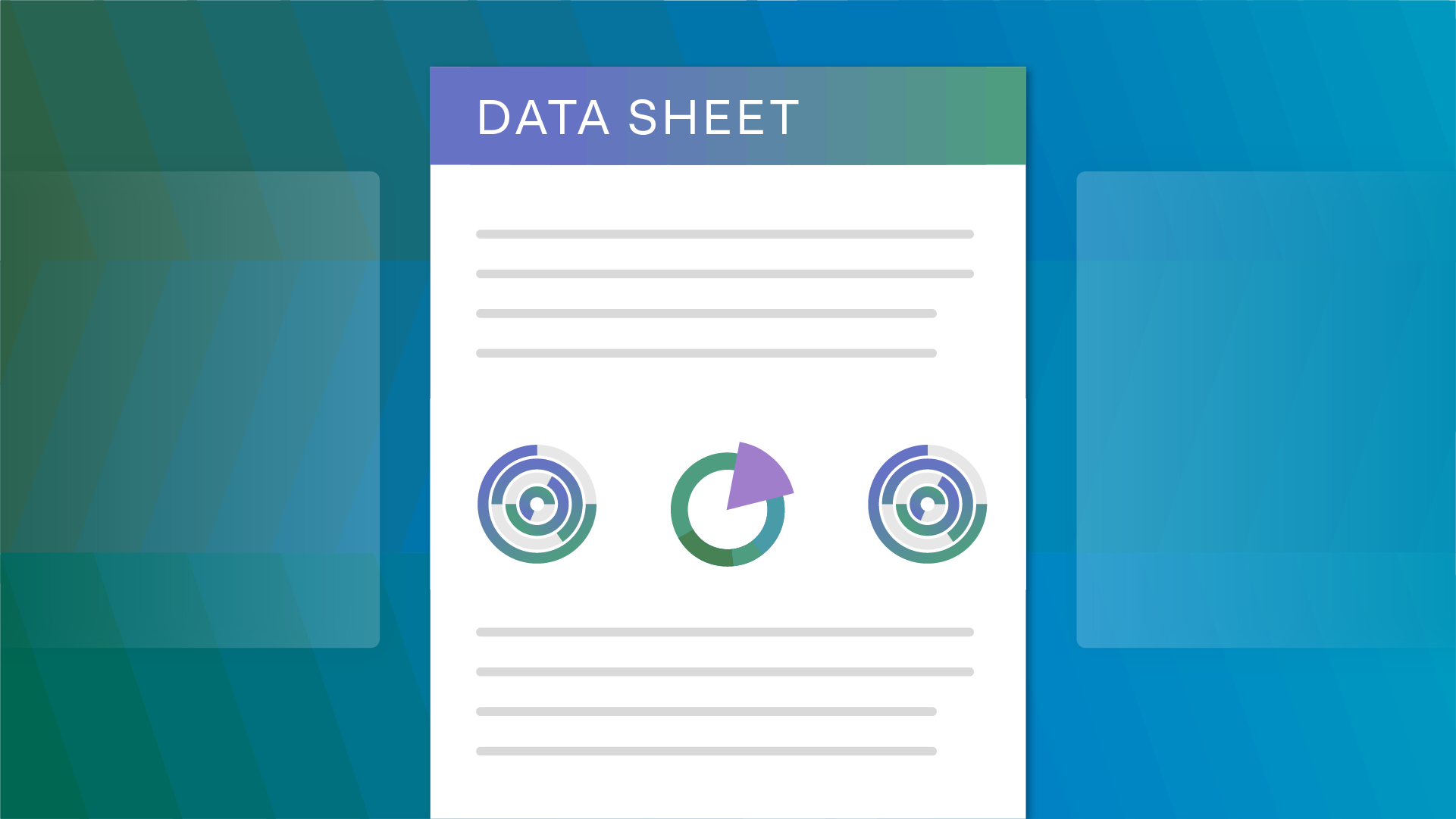
Data Sheet
Technology Risk & Compliance
Certification Automation: Managing PCI DSS compliance
See how OneTrust Certification Automation streamlines PCI DSS compliance by identifying controls and requirements with automation.
July 05, 2023

On-Demand
Technology Risk & Compliance
How to successfully implement ISO 27001 to demonstrate security and assurance across any jurisdiction
Join our live webinar and hear from security professionals on how to get ISO 27001 certified, streamline audit preparation, and demonstrate security assurance across any regulatory jurisdiction.
June 28, 2023

eBook
Third-Party Risk
InfoSec's guide to third-party risk management: Key considerations and best practices
Download our eBook to learn practical advice on how to approach third-party risk management like an InfoSec expert.
June 05, 2023
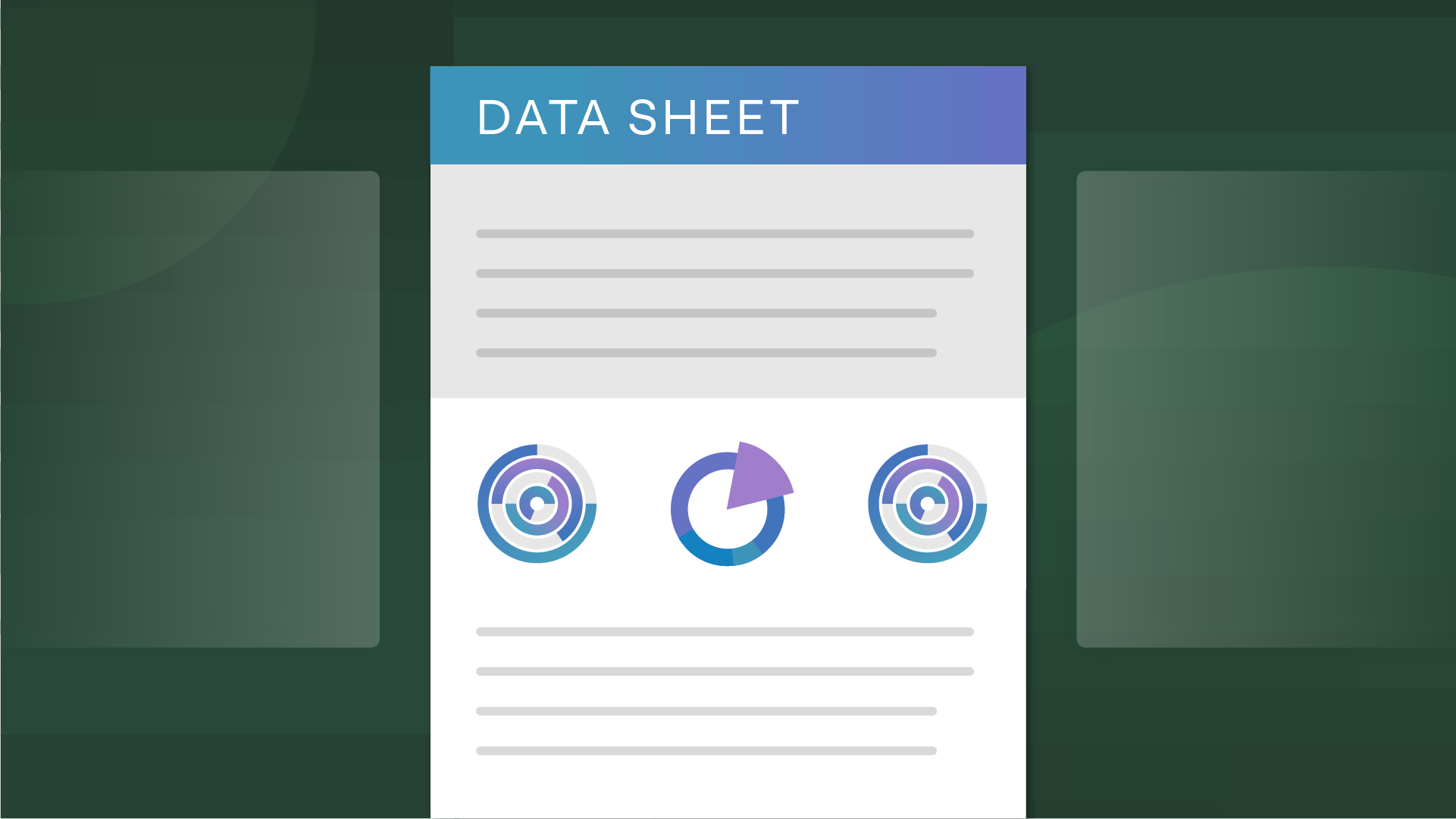
Data Sheet
Technology Risk & Compliance
Compliance Automation external audit management
Take a look at how OneTrust Compliance Automation can help streamline your preparation for audits, drive accountability, and track results.
May 16, 2023

On-Demand
GRC & Security Assurance
Combating InfoSec compliance fatigue: Insights for navigating growingly complex requirements
In this webinar, you will hear first-hand from information security experts experts what are the key pain-points and their strategies to be audit ready.
February 27, 2023

On-Demand
Technology Risk & Compliance
Introducing OneTrust Certification Automation: Build, scale, and automate your InfoSec compliance program webinar
In this webinar, learn how to right-size your compliance scope for different frameworks across various business dimensions and enable an agile audit process.
February 15, 2023

On-Demand
GRC & Security Assurance
Introducing OneTrust Certification Automation: Reinforce privacy accountability with automated InfoSec compliance
Learn how to enable an agile audit process by breaking down complex InfoSec requirements into actionable tasks to help automate your compliance program.
February 10, 2023

Infographic
Technology Risk & Compliance
ISO 27001: Global changes and impact to your compliance program
This infographic will explain how the updates to the ISO 27001 framework will have a huge impact on information security programs across all industries.
December 14, 2022

eBook
Technology Risk & Compliance
The future of information security
Learn how to respond to the security landscape and build a proactive InfoSec program to help your customers and business.
October 10, 2022

eBook
Technology Risk & Compliance
The art of the enterprise IT risk assessment
Ensure your enterprise IT risk assessment is a success with a top-down approach that gets executive buy-in from the start
September 16, 2022

eBook
Technology Risk & Compliance
The enterprise DevSecOps playbook
As a unified business function, DevSecOps combines rapid software development with top-notch security at scale.
September 02, 2022

On-Demand
GRC & Security Assurance
How to reinforce your InfoSec risk program in a “Not If, But When” incident environment webinar
Learn how scaling your approach to managing IT assets & risk assessments can deliver a complete picture to better measure and inform program investments.
August 16, 2022

On-Demand
GRC & Security Assurance
5 critical mistakes to avoid when answering security questionnaires
Avoid these 5 critical mistakes when answering security questionnaires and streamline responses with this webinar.
March 01, 2022

On-Demand
GRC & Security Assurance
How successful security teams manage risk to build Trust and drive Growth
Watch this webinar to learn what makes a successful risk management program and how effective security teams build trust.
January 12, 2022
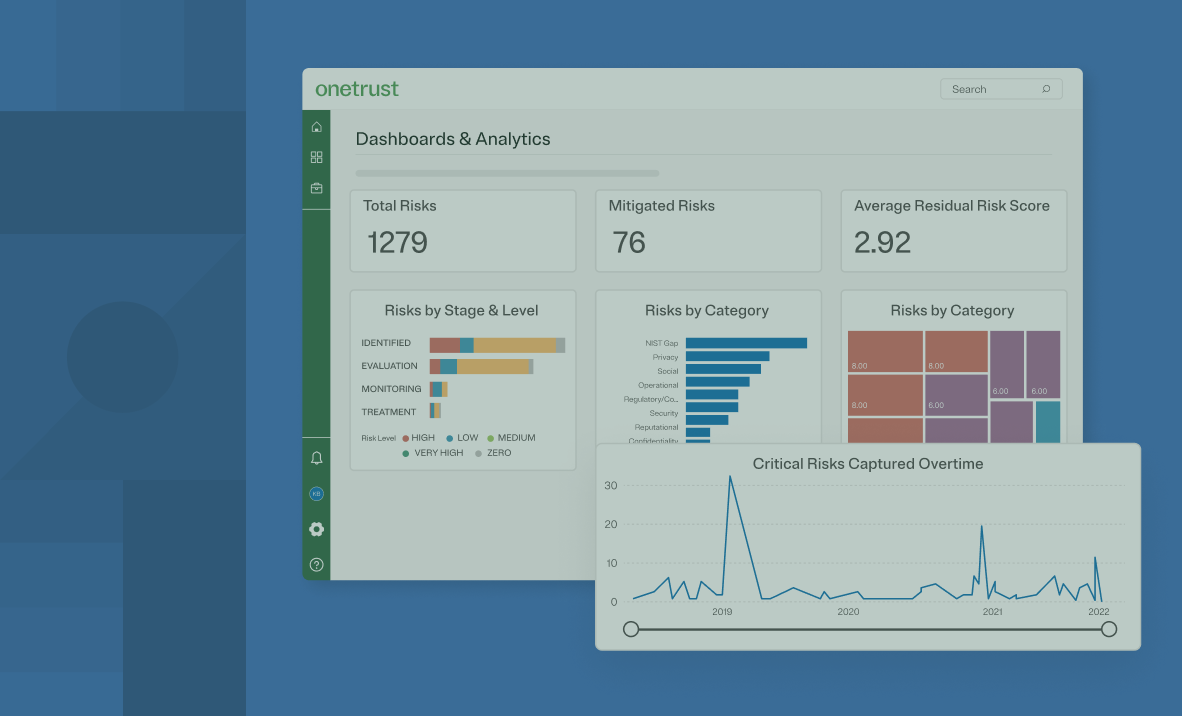
Demo
Technology Risk & Compliance
OneTrust Tech Risk and Compliance demo
Manage tech risks and ensure compliance with our all-in-one solution. Automate workflows, scale resources, and measure program effectiveness to stay ahead of evolving regulations.

Infographic
Technology Risk & Compliance
The future of GRC: 10 drivers and trends
In this infographic, we cover the top 10 GRC drivers and trends that will impact the future of organizations, including fragmented internal data and systems.

